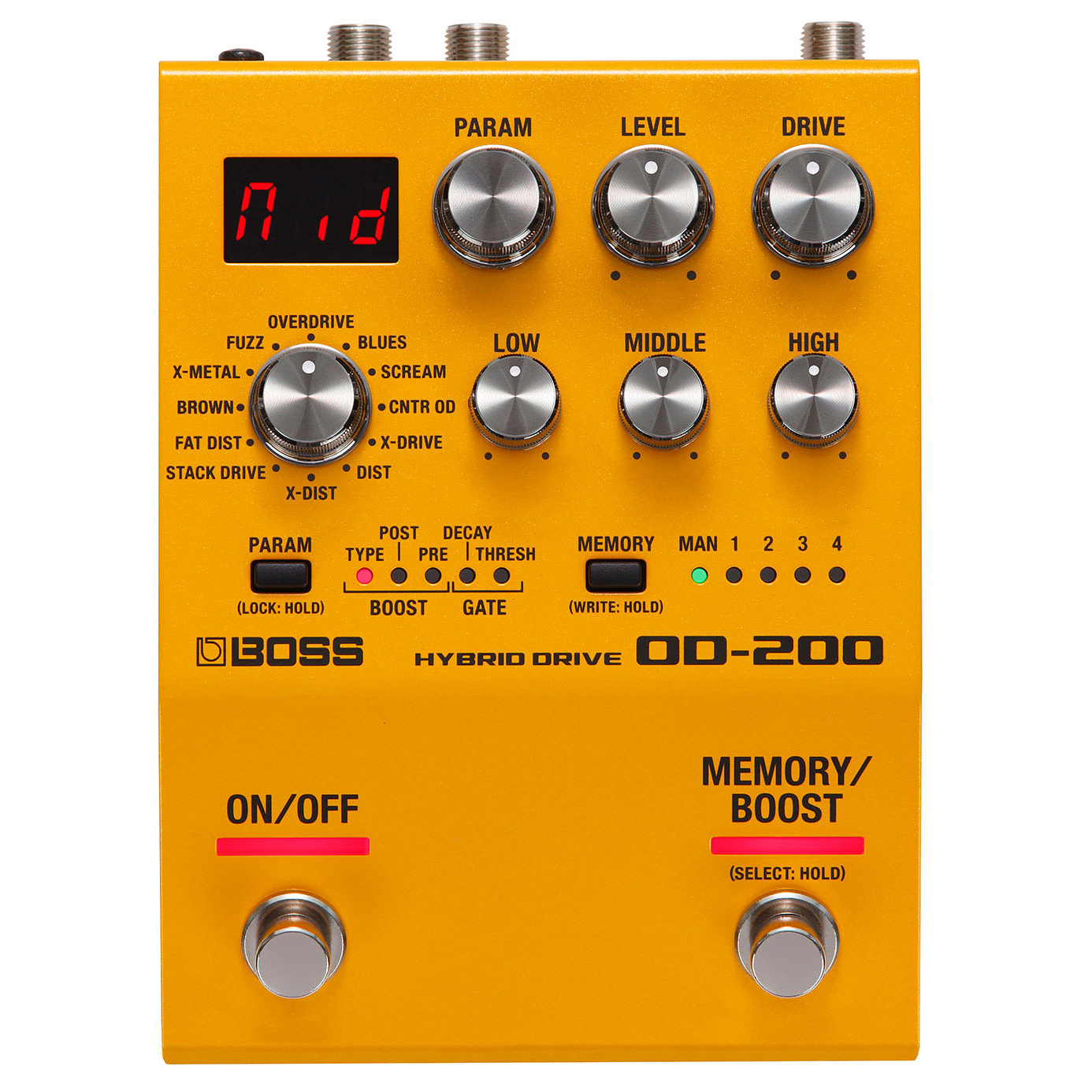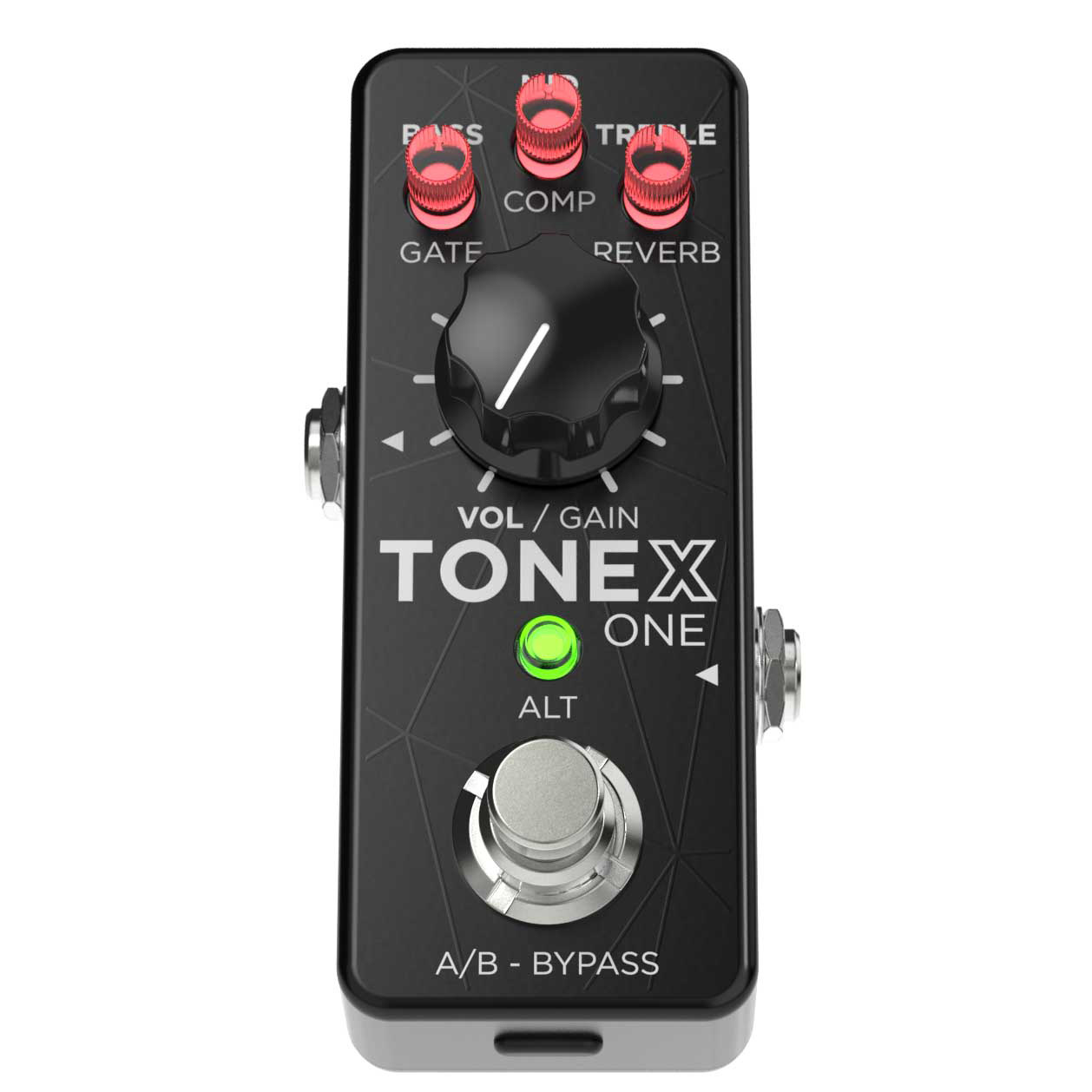MusicRadar Verdict
A well-laid out, functional multi-drive pedal that’s perfect for players wanting to explore the world of overdrive, distortion and fuzz. While many of the 200 sounds do repeat themselves a little, this compact pedal is laid out just as well for live use, as it is for beginners at home.
Pros
- +
Huge range of different tones available, plus drive stacking.
- +
Very easy to use.
- +
Affordable.
Cons
- -
Some sounds are very similar.
- -
Not as rich a tube amp or decent analogue overdrive.
- -
Bluetooth would be nice.
MusicRadar's got your back
What is it?

The Zoom MS-200D+ Multistomp continues the series' push for compact value, containing 200 overdrive, fuzz, distortion, preamp and boost effects. There are emulations of some classic overdrive pedals, like the Tube Screamer and Klon, as well as sounds based on legendary tube amps. There are also a few EQ and noise gate options, plus a tuner.
Other units out there can offer multiple drive options, but most don’t quite have as many as 200 onboard to choose from, nor are they this affordable. Additionally, the MS-200D+ allows you to stack two of its drive sounds together, providing a dizzying combination of sounds. So how does it all add up?
Specs

Launch price: £131//$140/€159
Type: Digital overdrive/distortion/fuzz pedal
Features: 200 drives, 240 preset slots, two effects simultaneously, parallel and series routing, onboard tuner, colour coded categories, two screen brightness modes
Connectivity: Input, output, power in, USB-C
Power: 9V DC (500mA), USB-C, 2 x AA batteries
Weight: 346g
Size (LxWxH): 133mm × 79mm × 61mm
Contact: Zoom
Build quality

Build quality rating: ★★★½
Picking the MS-200D+ up, you can feel that it’s got a sturdy metal casing – it doesn’t feel quite as indestructible as a Boss pedal, but it’s good enough. The footswitch also feels like it’ll withstand some heavy-duty stomping.
The four buttons that surround the footswitch are designed to be operated by foot. Made from plastic, when depressed the click isn’t massively reassuring. That said, I can honestly say would still trust it enough to put on my pedalboard and take out of the house and rehearsal room for shows.

Having the four encoder control knobs in a slight dip in the pedal is a great way of saving space whilst keeping them out of the way of your foot so you don’t accidentally knock them. They’re a little more awkward to access because of this, but I’d say it’s a worthwhile sacrifice.
Want all the hottest music and gear news, reviews, deals, features and more, direct to your inbox? Sign up here.
One problem I did have was that my pedal power supply didn’t fit particularly well into the recessed socket. It is recommended that you use the Zoom AD-16 supply (you can also use two AA batteries, or 5V USB instead), but one isn’t included. I was able to power it up, but the connection kept coming loose - something to bear in mind.
Usability

Usability rating: ★★★★½
The display helps here, showing you nice little graphics of the style of pedal you’re using
In terms of ease of use, the MS-200D+ scores very highly. Without looking at any manuals, it’s easy to figure your way around it. It’s very simple to switch between the drive sounds in your patch and turn them on or off, and it’s just as easy to then navigate up to the next patch where you can have two completely different sounds ready.
If you want to swap any sounds out, you can browse the massive library of different virtual stompboxes with ease. The display helps here, showing you nice little graphics of the style of pedal you’re using. They’re broken up into sections and colour-coded too, so overdrives have a yellow background, boosts - blue, fuzz - red, distortion - orange, preamp - purple and EQ in green.
Navigating the deeper parts of the menu isn’t difficult either; all four pushable encoder knobs and the four buttons alongside the footswitch all play their part in making it really intuitive. Holding down the footswtich then gives you access to the tuner.
There is an iOS app with which you can expand and tweak your sounds. It’s constantly growing and there’s plenty to get your teeth stuck into, however, having the pedal Bluetooth enabled would be much more practical to get it linking with your phone or device. With so many things like this now done wirelessly, it seems like a bit of a step backwards to have to link to your phone with a cable.
Sounds

Sounds rating: ★★★★☆
Plugging the MS-200D+ Multistomp into a clean amp, and using the first of many presets, you’re met with a rich, lush-sounding overdrive. Being completely honest, I was pleasantly surprised. It reacts fairly well to your playing, though you don’t quite have the dynamic range or touch sensitivity you’d get with a cooking tube amp.
One of the big selling points of this pedal is the range of effects on board, and it’s great to be able to sweep between a light overdrive and a gnarly, spitty fuzz sound. If you want chunky, mid-scooped, metal-ready distorted tones, you’ve got them. Subtle on-the-edge-of-breakup tones; you’ve got those too.
The boosts also work nicely with a tube amp, pushing it into a more natural overdrive than perhaps some other digital versions can offer.

When you’re looking at the emulations of classic pedals or amps, you can tell what they’re trying to do, though most of them fall slightly short of being a carbon copy of the original. With that in mind, it’s worth reminding yourself of the price – a half-decent Klon clone would cost you about the same as this, and here you’ve got 199 other sounds at your disposal.
Being able to alter the order of the two pedals you’ve got in your patch is a nice touch
You might wonder how different all of these drives and distortions can actually sound – it’s true that many of them do sound very similar, perhaps with just slightly altered EQs. I’d imagine that most users would probably find a few that they like from each category and stick with those.
After trying well over 100 of the presets out, I found that most of them were quite bottom-end heavy too. It’s easy to EQ that out using the knobs, but it’s worth keeping in mind.
Being able to alter the order of the two pedals you’ve got in your patch is a nice touch. It lets you change the tone you get, but also how it might react with your particular rig. You’ve even got the option of running them in parallel or series.
Verdict

The Zoom MS-200D+ Multistomp is a well-designed pedal, that’s bursting with a massive range of overdrive, distortion, boost, preamp and fuzz sounds. While the sounds aren’t as good as some of the more expensive multi-effects pedals out there doing a similar thing, it certainly offers incredible value for money.
MusicRadar verdict: A well-laid out, functional multi-drive pedal that’s perfect for players wanting to explore the world of overdrive, distortion and fuzz. While many of the 200 sounds do repeat themselves a little, this compact pedal is laid out just as well for live use, as it is for beginners at home.
| Test | Results | Score |
|---|---|---|
| Build quality | Some concerns about the power socket fit but otherwise solid. | ★★★1/2 |
| Usability | Intuitive and a definite strength of this pedal. | ★★★★1/2 |
| Sounds | Good flexibility but some sounds are similar to each other. | ★★★★ |
| Overall | A well-priced, accessible introduction to drive sounds in a compact pedal. | ★★★★ |
Also try

$249/£229
There's 200 overdrives from the stompbox legend packed in here for a pedal that also features hybrid analog/digital circuitry.

$249/£199
The current most affordable member of the Helix family allows you to sample its drives and over 250 more from the effects range, including delay, reverb and modulation. But you can only use one at a time.
Read more: HX One review

$179.99/€179.99
Unlock the enormous power of Tonex software with this compact little pedal. Alongside amp models there are drives with the option to switch between two and store a total of 20 on the pedal.
Read more: IK Multimedia Tonex One review
Hands-on videos
Zoom
Guitar Bonedo
Chris Benton
After spending a decade in music retail, Richard is now a freelance writer for MusicRadar, Guitar Player, Guitar World and Reverb, specialising in electric and acoustic guitars, bass, and almost anything else you can make a tune with. When his head’s not buried in the best of modern and vintage gear, Richard runs a small company helping musicians with songwriting, production and performance, and plays bass in an alt-rock band. Otherwise, you'll probably find him out walking the dog!




